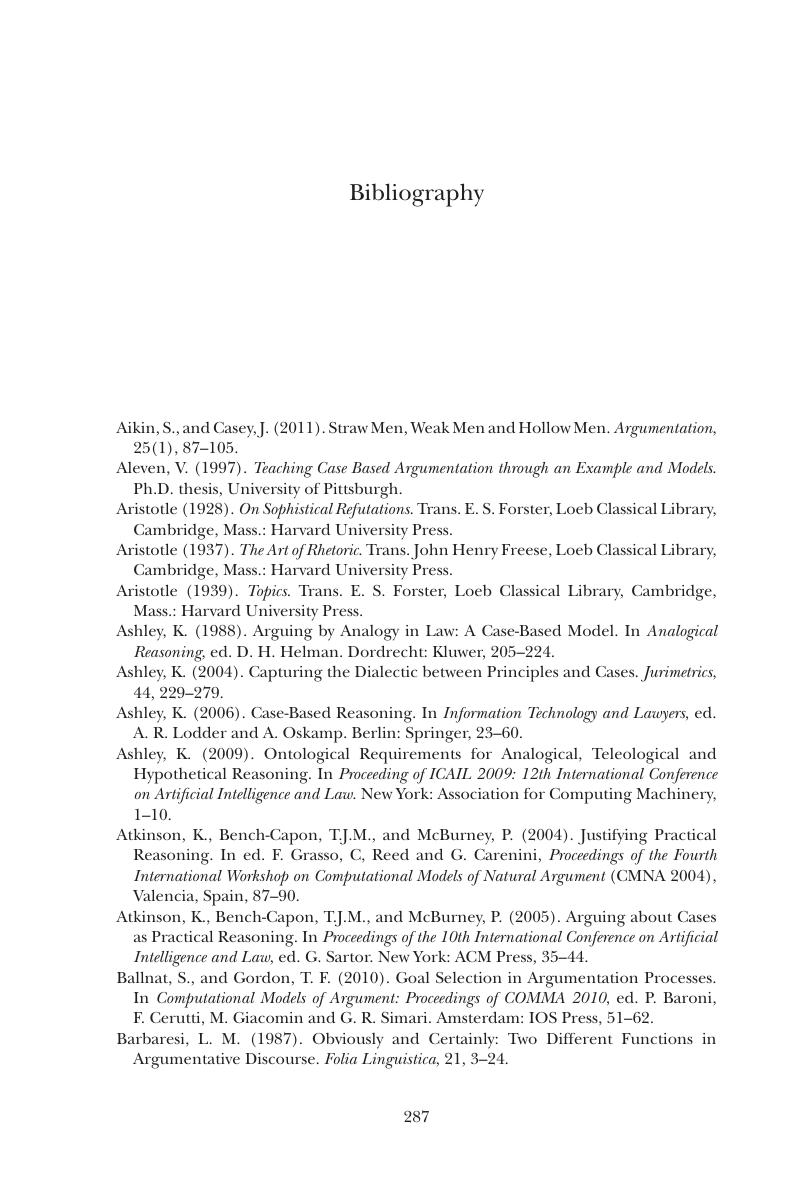Book contents
- Frontmatter
- Contents
- Acknowledgments
- 1 Introducing Some Basic Concepts and Tools
- 2 Argument Attack, Rebuttal, Refutation and Defeat
- 3 Arguments with Missing Parts
- 4 Applying Argumentation Schemes
- 5 Similarity, Precedent and Argument from Analogy
- 6 Teleological Argumentation to and from Motives
- 7 The Carneades Model of Scientific Discovery and Inquiry
- 8 Fallacies, Heuristics and Sophistical Tactics
- 9 The Straw Man Fallacy
- Bibliography
- Index
- References
Bibliography
Published online by Cambridge University Press: 05 June 2014
- Frontmatter
- Contents
- Acknowledgments
- 1 Introducing Some Basic Concepts and Tools
- 2 Argument Attack, Rebuttal, Refutation and Defeat
- 3 Arguments with Missing Parts
- 4 Applying Argumentation Schemes
- 5 Similarity, Precedent and Argument from Analogy
- 6 Teleological Argumentation to and from Motives
- 7 The Carneades Model of Scientific Discovery and Inquiry
- 8 Fallacies, Heuristics and Sophistical Tactics
- 9 The Straw Man Fallacy
- Bibliography
- Index
- References
Summary

- Type
- Chapter
- Information
- Methods of Argumentation , pp. 287 - 298Publisher: Cambridge University PressPrint publication year: 2013



